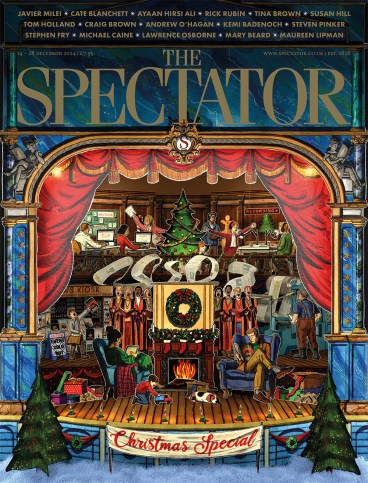
I thought we might be on to a winner with this book after the opening sentence. ‘From an early age,’ Simon Mayall writes, ‘I loved stories and storytelling.’ Sounds simple, but in a world in which many professional historians tend to know more and more about less and less, and write for each other rather than the wider public, the grand narrative history is something which general readers will applaud and enjoy.
Lieutenant General Sir Simon Mayall, to give him the full honours, is one of this country’s most distinguished soldiers and is steeped in the history of the Middle East. There is no doubting the pivotal nature of the ten military encounters he has summoned between Christendom and the caliphate over the past 1,300 years.
We begin with the battles of Yarmuk and Qadisiyya in 636, in which Arab Muslim armies put an end to Christian rule in Syria and routed the once mighty Persian empire, setting the scene for the rise of an Islamic caliphate only four years after the death of the Prophet Mohammed. We end with the fall of Jerusalem to the British in 1917, one of the nails in the enfeebled Ottoman empire’s coffin and the first time since the Crusades that a Christian-led force had taken control of the Holy City. These two events bookend a narrative teeming with battles, sieges and, of course, the Crusades – the latter covered in a rollicking trio of chapters, from Christendom’s blood-soaked victory in Jerusalem in 1099 to Saladin’s revenge at Hattin in 1187 and the fall of Acre in 1291.
Honours are more or less evenly distributed. There are epic Christian triumphs, including the heroic resistance of the Knights of St John at Malta in 1565, and top-tier Muslim feats of arms, such as the history-making conquest of Constantinople in 1453 by the 21-year-old Ottoman Sultan Mehmed II.
Mayall contrasts the barbarism of the crusaders’ slaughter of Jews and Christians in Jerusalem in 1099 with the magnanimity and restraint shown by a victorious Saladin after Hattin. This is arguable, though we might add that it is just as mistaken to use 1099 as a marker of inherent Christian evil as it is to single out 1187 as proof positive of Muslim moral superiority. In the long and fractious relationship between Christendom and the Muslim world, atrocities and compassion can be found on both sides. To give one example, in the immediate fall of Constantinople in 1453, the city’s Christian inhabitants who had taken sanctuary in churches were massacred, and nuns and monks raped and enslaved – just as Muslims seeking safety in Jerusalem’s mosques were butchered half a millennium earlier. There are few saints in these pages.
During the siege of Malta in 1565, after the Ottomans had nailed the beheaded corpses of the Knights of St John to wooden crucifixes and let them drift across the Grand Harbour to Fort St Angelo, the Grand Master Jean Parisot de la Vallette responded by beheading Turkish prisoners, loading their heads into cannons and firing them into the Turkish camp. Neither attackers nor defenders were slow in finding imaginative ways pour encourager les autres.
As a soldier, Mayall knows all about the violence, fear, fatigue, boredom and glory of warfare and does not hold back from describing the realities of conflict. This is the reeking cacophony of slashing swords, booming cannons, flesh-piercing shrapnel, guts and gore, gruesome tortures, summary executions and ships’ decks slick with blood. Mayall’s history is hugely readable, red in tooth and claw.
Some may argue that The House of War presents an unnecessarily antagonistic distillation of the long and complicated history of Christian and Islamic interaction. The selection of uniquely military encounters gives the impression that this has been the exclusive form of engagement. Yet, as Mayall acknowledges, both Christian West and Muslim East have been regularly consumed by their own internecine and sectarian warfare and more than happy to strike cross-cultural alliances in their own interests whenever it suited them. The Franco-Ottoman alliance lasted more than 250 years from 1536 and was one of France’s longest lasting diplomatic treaties. Sunni Muslim Ottomans, meanwhile, launched numerous bloody campaigns against the Shia Muslim Safavid dynasty of Persia.
One important distinction between Muslim East and Christian West is worthy of comment. Historical memory somehow appears to run deeper in the Muslim world, which is why, in 2010, al Qaeda could send a parcel bomb to New York addressed to Reginald of Chatillon, the French crusader prince killed by Saladin in 1187. His crime? He had attempted to attack the sacred city of Mecca.
Speaking of al Qaeda, this reader would have liked a full and final chapter devoted to the most recent incarnation of a caliphate in the 21st century, albeit one which was self-styled, incompetently administered, synonymous with sanguinary atrocities and mercifully short-lived.








Comments